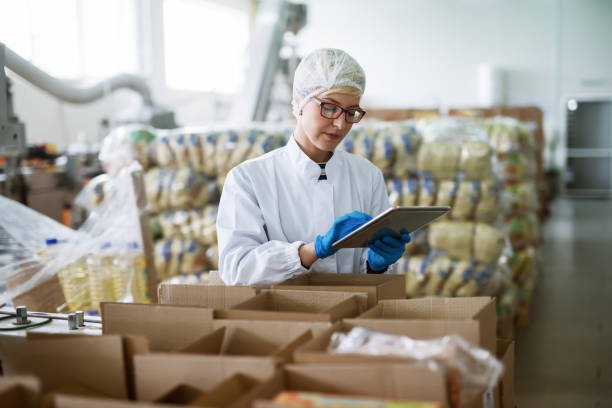Inside BENEO’s new pulse plant: pioneering sustainable protein from faba beans
Ashwin Bhadri, CEO, Equinox Labs
Food manufacturers go the extra mile to package their products in an appealing manner to drive high sales figures. There is a possibility of the packaging materials leaching into the food products if they are of bad quality. Food product packaging consists mainly of 5 types of materials. They are:
- Plastic: Plastic packaging is widely used due to its cost-effectiveness and versatility. However, certain types of plastics contain harmful chemicals such as bisphenol-A (BPA) and phthalates. These chemicals can leach into the food and may lead to various health issues, including hormone disruption and potential carcinogenic effects. Additionally, plastic waste is a major environmental concern, contributing to pollution and posing a threat to marine life.
- Styrofoam (Expanded Polystyrene): Styrofoam is often used for take-out containers and disposable food packaging. It is non-biodegradable and can take hundreds of years to decompose, leading to environmental pollution. Further, Styrofoam can release toxic substances that can contaminate the food when heated.
- Aluminum: Aluminum is used for packaging certain food products like beverages, canned foods and ready-to-eat meals. Aluminum exposure has been linked to neurotoxicity and excessive intake may be harmful to the brain and nervous system.
- Cardboard and Paper: Cardboard and paper packaging is generally considered safe for food products, especially when coated with food-grade materials. However, certain inks, dyes, or coatings used on paper packaging may contain harmful chemicals, and improper disposal of paper waste can contribute to environmental pollution.
- Glass: Glass packaging is considered one of the safest options for food products, as it does not leach harmful chemicals into the food. However, glass is heavy and can be more expensive than other materials, thereby leading to higher transportation costs and potential energy consumption.
- Tetra Pak: Tetra Pak is a popular choice for packaging dairy products, juices, and other liquid foods. It is a composite material comprising paper, aluminum, and plastic layers. While it is considered safe for food, the multi-layered composition makes recycling more challenging, and improper disposal can have negative environmental impacts.
- Biodegradable and Compostable Materials: Some manufacturers are shifting towards biodegradable and compostable materials made from plant-based sources. While these materials are less harmful to the environment compared to traditional plastics, the full extent of their environmental impact depends on how they are managed after use. For instance, if not properly composted, they may still contribute to pollution.
Despite taking stringent steps to ensure good quality of packaging materials, leaching of packaging materials into products could be possible. While leaching up to a certain extent is permissible by the FSSAI, food manufacturers must know if their packaging materials are leaching in their products and to what extent. Migration testing is a type of food safety test that is used to determine the amount of a substance that can migrate from a food packaging material into the food itself. This is important because some substances can be harmful to human health if they are consumed in large enough quantities.
There are two main types of migration testing:
- Direct contact migration testing involves placing the food packaging material in direct contact with the food and then measuring the amount of substance that migrates into the food.
- Indirect contact migration testing involves placing the food packaging material in contact with a simulated food matrix and then measuring the amount of substance that migrates into the matrix.
The results of migration testing can be used to determine whether a food packaging material is safe for use. If the amount of substance that migrates into the food is too high, then the packaging material may not be safe to use. Migration testing is an important part of food safety and helps to protect consumers from harmful substances. Additionally, the leaching of harmful substances and chemicals from packaging materials is not the only way the food could prove unsafe for consumption. Food contact materials could also transfer impurities and contaminants to food products, thereby rendering them unsafe for consumption. Food contact materials that could affect food quality are:
- Food Manufacturing Equipments (Belts, Gaskets, Lubricants)
- Food Preparation Wares (Crockery and Utensils like Chopping Boards, Whisks)
- Food Packaging (Plastics, Containers)
- Dining Wares (Bowls, Plates, Spoons)
By conducting migration testing, manufacturers can deliver some benefits to the consumers by making the food products safe. Further, migration testing can help identify potential health risks from food packaging materials. It can also help improve the quality of food products while protecting the reputation of food companies. Migration testing is a valuable tool that can help to ensure the safety of food products.
Migration testing proves beneficial to the manufacturers as it reduces the risk of product recalls, increases consumer confidence in food products, helps comply with food safety regulations, and protects the environment. Migration testing is a valuable tool that can help to ensure the safety of food products and protect consumers from harmful substances.
Image credit- iStock

